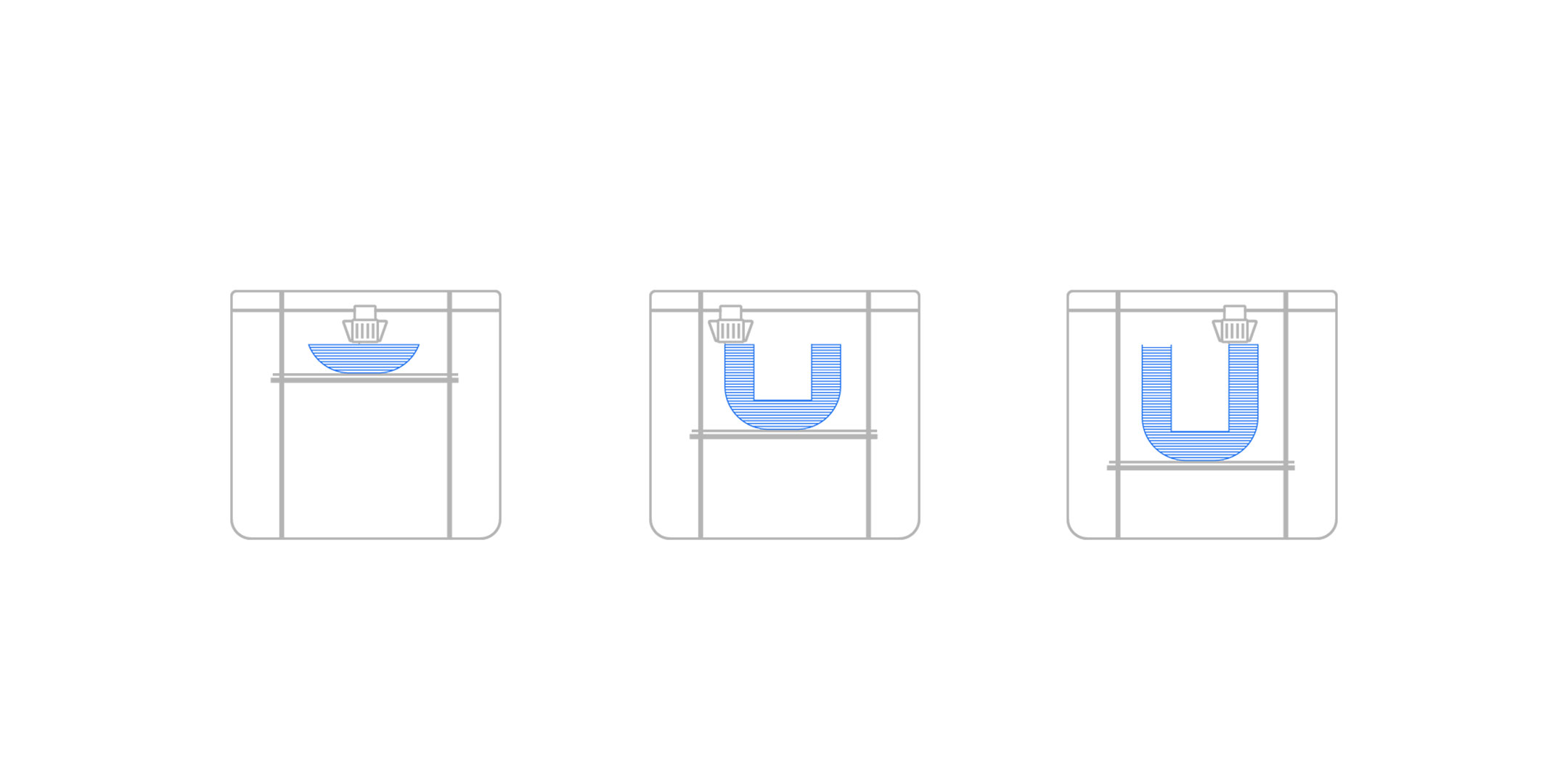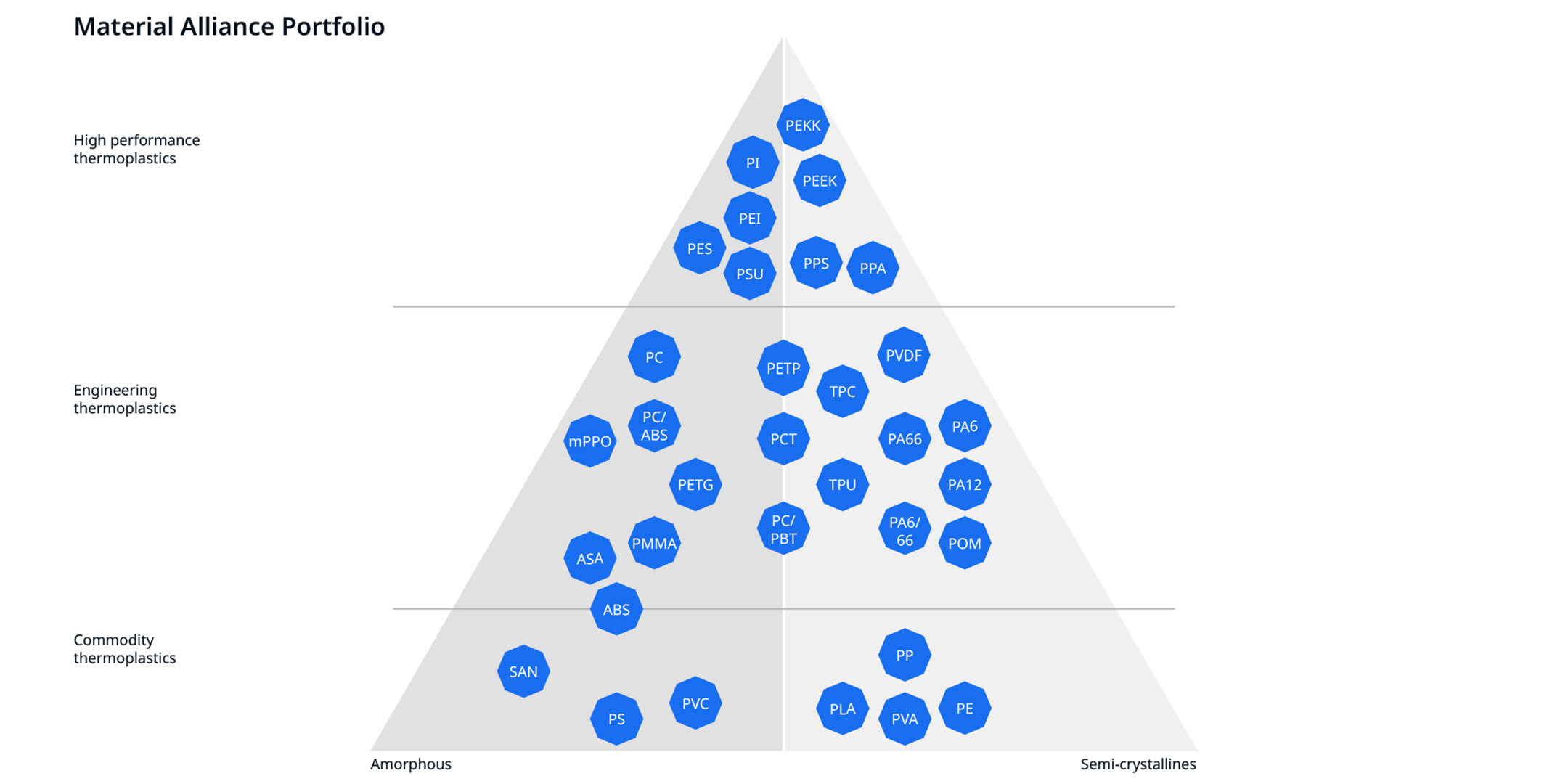In part one of our three-part series on 3D printing materials, we will cover fused filament fabrication (FFF), Ultimaker’s material range, and the importance of an open-filament system.
What is FFF?
FFF, or fused filament fabrication, is a process used in 3D printing in which an object is created bottom-up, layer by layer, with each layer consisting of melted filament which ‘fuses’ to the layer beneath it. This filament is typically made of thermoplastic.
FFF is the most widely used form of 3D printing; it represents the largest installed base of 3D printers globally. Other forms exist, of course, each with unique advantages and disadvantages – but all Ultimaker 3D printers use FFF, as it is ideal for printing prototypes, tools, and end-use parts. Furthermore, the FFF process is easy to maintain, and requires little to no post-processing nor the use of harsh chemicals.
The FFF 3D printing process
The material pyramid
It goes without saying that 3D printing has a variety of use cases and applications – and has its place in industries and environments such as automotive, aviation, manufacturing, architecture, engineering, and more. This variety, however, means that the right 3D printer is able to print with a wide range of materials. This, too, is one of the benefits of FFF. Ultimaker 3D printers target three material ranges:
Commodity
Engineering
High-performance
Commodity materials, which include PLA and ABS, are commonly used for product development or model-making. Engineering materials such as PA, TPU, and PET-G, are used for applications that could potentially better serve the functional requirements of mechanical applications and end-use products. High-performance materials, meanwhile, including PEEK and PEI, are best-suited for applications that provide mechanical properties suitable to meet the highest requirements.
It is important to remember that every material has unique mechanical properties, strengths, and limitations. Before going ahead with any print job, consider these mechanical properties and choose the material that best fits the job at hand. The below pyramid represents an overview of the material range. Typically, the higher a material is on the pyramid, the better its mechanical properties. Take a look:
The importance of being open
All Ultimaker 3D printers feature an open-filament system, which means engineers, designers, and manufacturers – and any other Ultimaker user – can select the best material for the job, no matter what. Whether it is strong mechanical properties, heat, UV, or chemical resistance, flexibility, flame retardancy or ESD-safe – with Ultimaker, it is simply a matter of selecting the material with the required properties to print the desired application and using its profile on the Marketplace.
Materials are a cornerstone of the Ultimaker economy. Much of this is thanks to the Ultimaker Material Alliance, through which we partner with material suppliers around the world to offer our users the best chance at simplified workflows, ‘always-on’ productivity, and maximized return on investment.
Be sure to look out for the second in our 3D printing materials series, in which we will take a deep dive into material categories, detailing their properties, industry applications, use cases, and more. Can’t wait? Learn more about Ultimaker materials and the Ultimaker Material Alliance by visiting our Materials page.
























